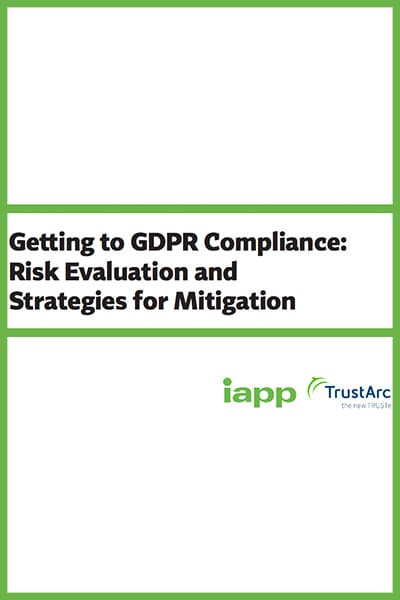BYO Software, BYO Vulnerabilities
The shadow IT phenomenon—in which employees use their personal technology on the job—looms larger than ever. The latest twist- bring your own software.
First up was the bring-your-own-device (BYOD) movement, with employee-owned smartphones, tablets and laptops replacing company-owned devices in the workplace. Now there is a newer shadow IT twist—bring your own software (BYOS). In this increasingly popular model, employees download and utilize software, apps and the like—in some 99 out of 100 cases, web-based—for such work-related purposes as collaborating or exchanging information with colleagues.
Like its BYOD counterpart, the BYOS model affords employees the flexibility to use the tools that best help them fulfill their responsibilities, in turn increasing productivity and benefiting corporations’ bottom lines. But as is true of BYOD, BYOS also opens doors for significant risks, making risk mitigation a must for all corporations that embrace it to any extent.
The Risks
What, exactly, do organizations risk when they embrace BYOS? Governance-, litigation- and compliance-related complications rank at the top of the list. Quite often, corporations are unaware that certain data resides in employee-acquired software until such data is found during the discovery stage and/or in the midst of litigation. Negative consequences can ensue here. For one case of which we are aware, in-house corporate counsel was deeply involved in discovery before learning that data pertaining to pending litigation could be found on a collaboration platform that had been downloaded by an employee. This revelation was an extremely unwelcome surprise—and it had a poor impact on the case itself.
Additionally, companies can, as a result of BYOS, experience leaks of intellectual property or expose data that is mandated to be protected—e.g., personally identifiable information (PII) pertaining to customers or employees. The risk of PII disclosure from BYOS merits particular attention in light of the General Data Protection Regulation (GDPR), which takes effect on May 25, 2018. The regulation applies to PII that belongs to the customers and employees of corporate (and government) entities that are headquartered and/or do business in the European Union (EU). Fines for violating the GDPR will be stiff—up to €20 million ($23.5 million U.S.) or 4 percent of global revenue, whichever is higher.
Policies and Procedures
Mitigating BYOS risk begins with analyzing where the most significant vulnerabilities lie, which workflows lead to them and what individual platforms are meant to help employees to accomplish. With this in mind, organizations can formulate policies that govern the type of software employees can bring to the workplace and those they cannot, as well as how BYOS “products” are to be used.
Nonetheless, policies cannot completely eliminate the potential risks of permitting employees to download software to any device for use in the course of their work. Why? In certain instances, employees are so tempted by the ease of downloading and experimenting with software tools prior to purchasing them that they fail to consider whether accepting so-called “try before you buy” offers from vendors would violate corporate BYOS policy. Some circumvent policies, either unintentionally or based on the belief that they need the software to get their work done, no matter what the rules dictate.
Moreover, it is not uncommon for employees to inadvertently store data and/or make data accessible to others when it should not be so. For instance, employees communicating socially on a BYOS platform may move into a work-related discussion and, in the course of connecting, add sensitive customer information to the system, where it remains and can be accessed by anyone. Although policies might prevent employees from utilizing a certain type of software, they cannot prevent them from sharing or keeping data purely by accident.
The Technology Edge
Thus, technology is an essential weapon when it comes to shadow IT. Risks inherent in BYOD can be partially mitigated through BYOD management and monitoring software. On the BYOS side, corporations should implement survey and collection solutions or leverage them in software-as-a-service (SaaS) mode. Such solutions support BYOS risk mitigation by harnessing artificial intelligence to determine what data has been shared and on which software platform, as well as by collecting legally defensible data as necessary. Data can be archived for later retrieval during eDiscovery and for other purposes, again minimizing exposure to BYOS-induced risk. It can also be easily located, so that it may be promptly deleted from the system when an employee, former employee, or customer makes such a request in keeping with the Right of Erasure afforded by the GDPR.
Without harnessing survey and collection solutions, it is difficult, if not impossible, to render software discoverable and compliant. If a corporation is unaware that BYOS in the form of an app, Wiki, collaboration platform or other software exists and that certain data resides within it, such discoverability and compliance cannot be achieved—the “unknown,” as it can be called, continues to exist.
Organizations can also benefit from adding another layer of risk mitigation by harnessing technology that permits them to regularly execute “discovery crawls.” Through these crawls, they can determine which new software platforms employees have brought to the table and, if warranted, take action to foster compliance with BYOS policies.
Shadow IT will, without a doubt, continue to present new risks to organizations as it evolves. Understanding and addressing these risks with a combination of policies and technology constitutes the best approach for minimizing existing vulnerabilities and limiting the negative effects of emerging ones.



 Kevin Gibson is CEO & Chairman of
Kevin Gibson is CEO & Chairman of 








